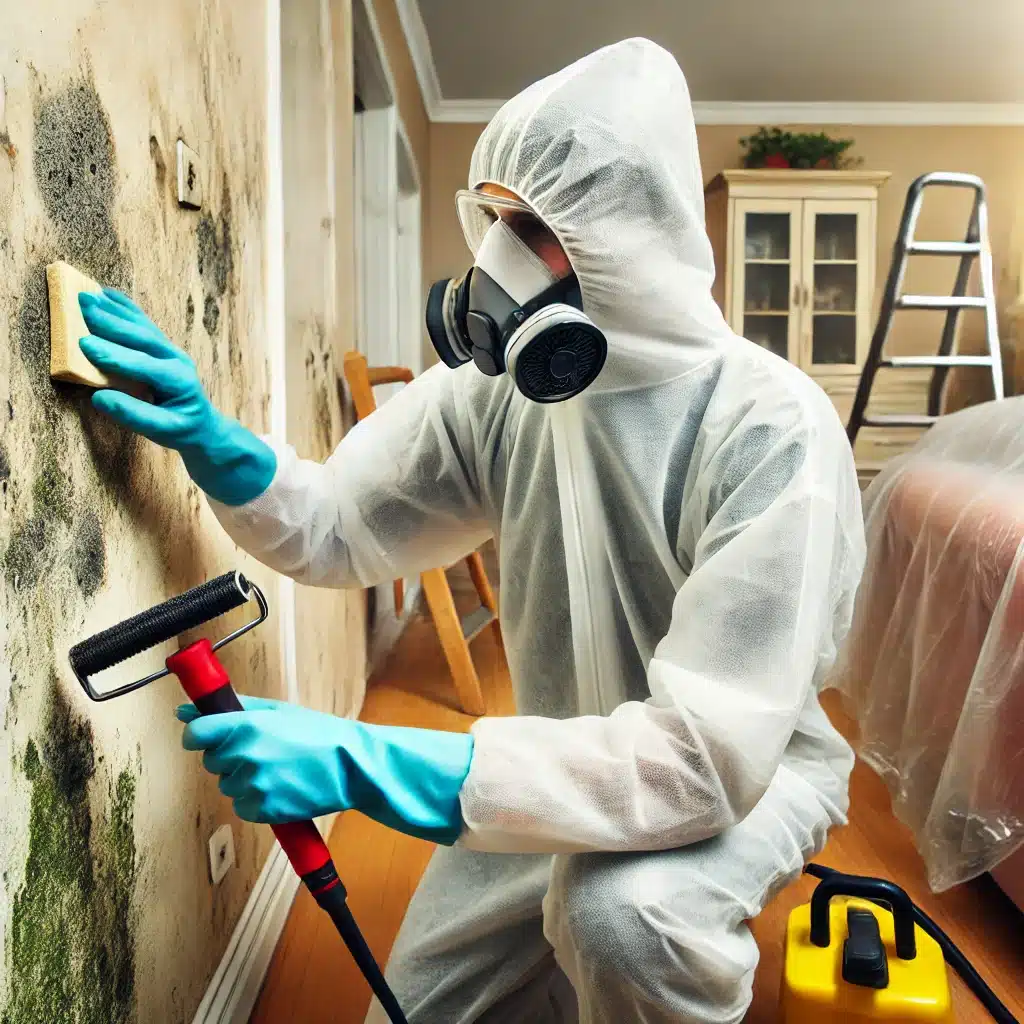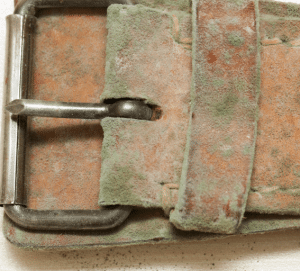Mold removal is essential to maintaining a healthy home environment. Mold can hide in damp, dark corners. If left unchecked, it can cause significant health issues and damage to your property. Whether you’re dealing with a small mold problem or a more extensive infestation, understanding how to effectively remove mold is crucial. Mold spores can trigger allergies, respiratory problems, and other health concerns, so prompt and proper removal is key to safeguarding your family’s well-being.
In this guide, we’ll walk you through everything you need to know about mold removal. We’ll discuss important considerations before starting a DIY project, the tools and materials you’ll need, essential safety precautions, and step-by-step instructions for removing mold. Additionally, we’ll share tips on how to prevent mold from returning, ensuring that your home remains a safe and healthy place to live. By following these steps, you can tackle mold problems confidently and effectively.
What You Need to Know Before DIY Mold Removal
Before embarking on a DIY mold removal project, it’s important to assess the situation and determine if it’s something you can handle on your own. Small mold problems can often be managed with proper precautions and tools, but extensive mold infestations may require professional help. Consider the following:
- Extent of Mold Growth: If the mold covers more than 10 square feet, it’s best to hire a professional.
- Location: Mold in hard-to-reach areas or within HVAC systems should be addressed by experts.
- Health Risks: Individuals with respiratory issues, allergies, or weakened immune systems should avoid handling mold removal.
What You’ll Need: Mold Removal Tools and Supplies
Tools Required
For effective mold removal, you’ll need the following tools:
- Protective Gear: Gloves, N95 masks, goggles, and long-sleeved clothing to protect against mold exposure.
- Scrub Brushes: Various sizes for scrubbing mold off surfaces.
- Buckets: For mixing cleaning solutions and rinsing.
- Spray Bottles: For applying cleaning solutions to moldy areas.
- Vacuum Cleaner with HEPA Filter: To clean up mold spores and debris.
Materials Required
You must also ensure you have these materials on hand:
- Mold-Killing Cleaning Solutions: Bleach, vinegar, or commercial mold removers.
- Detergent: For cleaning mold off surfaces before applying mold-killing solutions.
- Plastic Sheeting and Tape: To seal off affected areas and prevent mold spores from spreading.
- Disposable Cloths or Sponges: For wiping and cleaning moldy surfaces.
- Trash Bags: For disposing of contaminated materials safely.
Step-by-Step on How to Remove Mold in Your Home
Removing mold from your home requires careful preparation and execution to ensure it is done safely and effectively. Mold can pose health risks and cause significant damage to your property, so following a systematic approach is essential. Below are detailed steps to guide you through the mold removal process, from preparation to final cleanup, ensuring that your home remains mold-free and healthy.
Step 1: Preparation
- Wear Protective Gear: Always start by wearing protective gear, including gloves, an N95 mask, and goggles. This helps protect you from inhaling mold spores and coming into direct contact with mold, which can cause respiratory issues and skin irritation.
- Seal Off the Affected Area: Use plastic sheeting and tape to seal off the affected area. This containment prevents mold spores from spreading to other parts of your home during the cleaning process. Proper containment is crucial for maintaining a safe environment.
Step 2: Cleaning
- Mix a Cleaning Solution: Prepare a cleaning solution by mixing one cup of bleach with one gallon of water, or use a commercial mold remover. Always follow the manufacturer’s instructions if using a commercial product to ensure safety and effectiveness.
- Scrub Moldy Surfaces: Use a scrub brush to clean moldy surfaces with the prepared cleaning solution. Apply the solution generously and scrub thoroughly to remove mold from surfaces like walls, ceilings, and floors. Give close attention to places with evident mold growth.
- Rinse and Dry the Area: After scrubbing, rinse the area with clean water to remove any remaining cleaning solution and mold residues. Dry the area thoroughly using fans and dehumidifiers to prevent moisture buildup, which can lead to future mold growth.
Step 3: Disposal
- Dispose of Contaminated Materials: Place any contaminated materials, such as cloths, sponges, and disposable protective gear, in sealed trash bags. Proper disposal prevents mold spores from spreading and contaminating other areas.
- Vacuum with a HEPA Filter: Use a vacuum cleaner equipped with a HEPA filter to clean up any remaining mold spores and debris. HEPA filters are designed to capture tiny particles, including mold spores, ensuring a more thorough cleanup.
Step 4: Final Steps
- Apply Mold-Resistant Sealant or Paint: Once the area is clean and dry, apply a mold-resistant sealant or paint to the cleaned surfaces. This provides an extra layer of protection against future mold growth and helps maintain a mold-free environment.
- Ensure Proper Ventilation: Make sure the area is well-ventilated to avoid moisture buildup. Use exhaust fans, open windows, and ensure proper airflow to keep the space dry. Continuous ventilation helps prevent mold from returning and maintains healthy air quality in your home.
Mold Removal Safety Precautions
Wear Protective Gear
Always wear protective gear to prevent inhaling mold spores or having direct contact with mold. Use gloves, N95 masks, goggles, and long-sleeved clothing to minimize exposure. This protective gear helps prevent respiratory issues and skin irritation that can result from mold exposure. Ensure that your protective gear fits properly and is in good condition to provide maximum protection.
Ensure Proper Ventilation
Make sure the location where you’re working has appropriate ventilation. Open windows and doors to allow fresh air to circulate and use fans to help disperse mold spores and fumes from cleaning products. Proper ventilation reduces the concentration of airborne mold spores and improves air quality, making the environment safer for you to work in.
Avoid Mixing Cleaning Products
Avoid mixing bleach with other cleaning products to prevent toxic fumes. Some cleaning products, when combined with bleach, can release harmful gases that can cause serious respiratory problems and other health issues. To ensure safety, read and follow the instructions on cleaning product labels. If you’re unsure about the compatibility of cleaning products, use them separately or consult a professional.
Keep Children and Pets Away
Keep children and pets away from the mold removal area until it’s thoroughly cleaned and ventilated. Mold spores can easily become airborne and spread, posing health risks to vulnerable individuals. Ensure the area is properly contained and ventilated to prevent mold spores from contaminating other parts of your home. Once the mold removal process is complete, clean the area thoroughly and check for any remaining mold or debris before allowing children and pets back into the space.
Tips for Mold Prevention
- Control Humidity: Keep indoor humidity levels below 60%. Dehumidifiers may be helpful in maintaining humidity levels in areas that are damp.
- Fix Leaks Promptly: Repair any leaks in roofs, walls, or plumbing immediately to prevent moisture buildup, which can lead to mold growth.
- Improve Ventilation: Use exhaust fans in high-moisture areas such as bathrooms and kitchens to reduce humidity and improve air circulation, preventing mold.
- Dry Wet Areas: Ensure areas are thoroughly dried after spills or flooding.
- Use Mold-Resistant Materials: Consider using mold-resistant drywall and paint in areas prone to dampness, such as bathrooms and basements, to reduce the risk of mold.
- Conduct Regular Inspections: To detect potential mold problems early, inspect your home regularly, particularly in moisture-prone areas like basements, bathrooms, and around plumbing fixtures.
FAQs
How quickly can mold grow?
Mold can begin to grow within 24 to 48 hours under ideal conditions of moisture and poor ventilation. This rapid growth emphasizes the importance of addressing any water leaks or damp areas in your home immediately. Mold spores are always present in the air, so once they find a suitable environment, they can quickly develop into a full-blown infestation. Keeping your home dry and well-ventilated is crucial to prevent mold from taking hold.
What are the signs of mold growth in my home?
Signs of mold growth include visible black, green, or white patches on walls, ceilings, or other surfaces. You may also notice a persistent musty odor, especially in damp or poorly ventilated areas. Other indicators include water stains or discoloration on walls and ceilings, peeling or bubbling paint, and an increase in allergy or respiratory symptoms among household members.
How can I prevent mold from returning after removal?
Maintain low humidity levels in your home (below 60%) by using dehumidifiers and ensuring proper ventilation. Fix any leaks promptly and keep areas prone to moisture, like bathrooms and basements, well-ventilated. Use mold-resistant materials, such as mold-resistant drywall and paint, in areas that are susceptible to dampness. Inspect parts of your house often for signs of mold or moisture issues.
Can mold grow in cold temperatures?
Mold can grow in cold temperatures if there is sufficient moisture. While mold thrives in warm, damp environments, it can also grow in cooler areas, such as basements or attics, where condensation may occur. Keeping these areas dry and well-ventilated can help prevent mold growth, regardless of the temperature.
Can mold cause long-term health effects?
Yes, prolonged exposure to mold can cause long-term health effects, especially for individuals with respiratory conditions, allergies, or weakened immune systems. Chronic exposure can lead to persistent respiratory problems, skin irritation, and in severe cases, neurological issues such as memory loss and mood changes. Reducing mold exposure
Conclusion
Addressing mold problems promptly and effectively is crucial to maintaining a safe and healthy home environment. Mold can cause a variety of health issues, from mild allergies to severe respiratory and neurological conditions. Additionally, mold can lead to significant structural damage to your home if left untreated. By understanding the causes, symptoms, and complications of mold, you can take proactive steps to identify and remove it efficiently. Regular inspections, proper ventilation, humidity control, and timely repairs of leaks are essential preventive measures. These steps help ensure that mold does not gain a foothold in your home.
If you find extensive mold contamination, seeking professional help ensures thorough remediation and protection for your home and family. Mold professionals have the expertise and equipment to handle serious mold problems safely and effectively. Stay vigilant, act promptly, and make mold prevention and removal a priority to safeguard your living environment. By doing so, you can maintain a healthy home and protect your loved ones from the harmful effects of mold.
End Note
Ensuring your home is free from mold is essential for your family’s health and well-being. Our expert mold testing and remediation services are here to help. With certified professionals and state-of-the-art equipment, we provide thorough inspections and effective mold removal solutions.
Visit our webpage for more information and to schedule a consultation. Let us help you maintain a mold-free, healthy living environment. Our services are designed to address mold problems comprehensively, ensuring that your home remains a safe haven for you and your family.
Don’t wait until mold becomes a serious issue—contact us today to ensure your home is safe and healthy. We are committed to providing the best solutions to keep your living space mold-free and secure.





